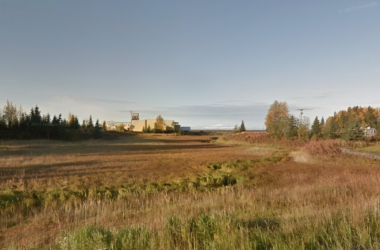The topic of ‘where is our gas coming from,’ has been a big concern over the past few years for those across the Peninsula. While importing gas is an option, the Alaska delegation is against this move for the sole purpose that Alaska should be able to provide its gas through Cook Inlet.
But now bear the question,” Can we do that?”
Back in April of 2022, the natural gas producer announced that it did not have “a line of sight” to produce gas beyond its existing contracts.
In response, ENSTAR, along with local electric utilities began to look for an alternate supply of gas. Although ENSTAR does work alongside Hilcorp, many contracts will begin to expire in 2028.
Thus, the race for gas supply is on.
According to an interview provided by KSRM’s Merrill Sikorksi, ENSTAR President John Sims says that while the company is working to raise awareness about the current path, and the importation of LNG, Alaska is not running out of gas.
“Unfortunately, the likelihood is over the long term. It might not be coming from Cook Inlet anymore, and that is, as a born and raised Alaskan, it’s heartbreaking because there’s no question that for the state of Alaska, the best bang for our buckets to be buying Alaska resources, but it’s becoming more and more challenging but we are not running out of natural gas,” said Sims.
According to ENSTAR, since the announcement of searching for a long-term natural gas supply for South-Central Alaska came about, the Railbelt utilities formed the Utility Working Group, with advisory support from the Department of Natural Resources and the Alaska Energy Authority. Through this group, ENSTAR commissioned Berkeley Research Group to identify and implement alternatives to replace declining Cook Inlet gas.
What’s confusing about this situation according to Sims, is that there is a ‘ton of gas in Cook Inlet,’ but the challenge is finding companies that are financially able to make the significant investment that’s required to go out to develop the resources, and bring them to the market.
“Because we have producers willing producers that are interested in developing resources, and they have very specific needs, that they’re communicating that they’re telling people that they need to make those investments. And I’m not going to do that with the legislative session yet, but we haven’t quite got there. And so I’m hopeful. You know, I’m encouraged by what I’m seeing down in Juneau, from the perspective of there are legislators that are taking a look at this seriously. And I think wanting to make an impactful change to improve the state of Alaska from an energy perspective,” said Sims.
Something that Sims believes that Alaskans need to accept is that they will need some sort of subsidy or incentive from a business perspective since there is not currently a demand for a market to bring in lower-cost energy.
“So at this point, we’re just looking to sustain energy costs and not have increases if we go with the 100% market-based solution. We’re looking at increases of 40, 50 potentially double [of] what we’re paying today. And that’s what we’re trying to avoid because that is the energy an economy killer,” said Sims.
One other challenge that ENSTAR is discovering, is handling two problems at once, the short-term situation, and the long-term solution.
“We’re dealing with the short term or the near term, which is right in front of us. And we’re trying to fix that, but we’re also trying to work with the state of the federal delegation to come up with a long-term solution so that us as Alaskans can rest assured that their utilities are going to be able to provide the same service at the same high level of expectation that they have today,” said Sims.
To learn more about ENSTAR and the future of gas, click here.





